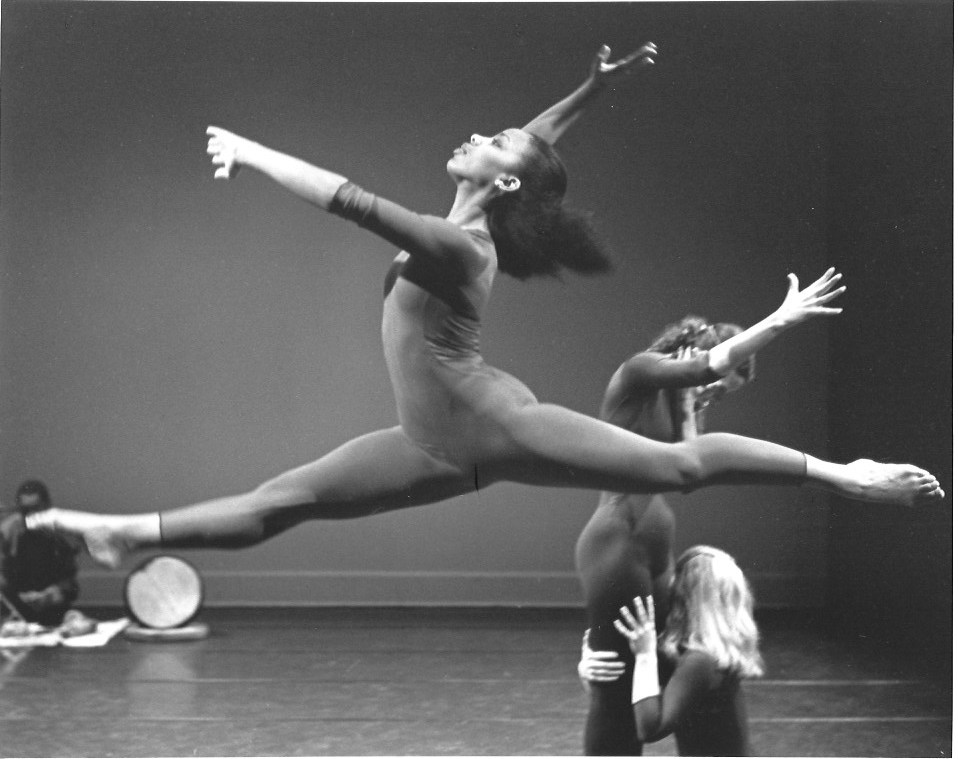The grant from the Nathan Cummings Foundation enabled us to fully realize our plans for The Forgiveness Project. We would have three full weeks of rehearsal time to create the new piece on forgiveness. That would be followed by four five-day residencies in four different places. I will be writing several blogs about these residencies. For right now I want to look at the rehearsal period which began in mid-January, 2002.
My thinking after September 11th was first that it was hard to feel that dance, or the arts, had any significance at all. As time passed I began to realize that the arts are extremely important to our healing as individuals and as a community.
The repertory that I once felt was relevant and appropriate no longer felt congruent. As of a result of those feelings I found it exciting and affirming to be doing new and creative work. Not only would I be choreographing the Forgiveness Project piece, but I planned to do two other pieces.
Newman Taylor Baker was composing the music for the Forgiveness Project piece. He would be playing it live for the performances as well as joining us for each of the residencies, available to accompany workshops.
The four dancers who had begun the work the previous year were not returning and so I was auditioning a totally new company for a season that would go from mid-January to mid-May. Here are the bios of the four dancers I selected (as they appeared in the 2002 Newsletter).
Andrea Eisenstein began her dance training in Houston, Texas at the Jewish Community Center. She graduated from the High School for the Performing and Visual Arts in 1996 and then continued her training at Sam Houston State University receiving a Bachelor of Fine Arts in the Fall of 1999. Moving to New York she started her own company, Ironstone Movement Company, and performed with Bridgeman/Packer, Liz Keen and Teri Weksler. She is also currently studying in the professional program at the Merce Cunningham Dance Foundation.
Jessica Sehested was born in New York City and grew up in Atlanta, GA and Memphis, TN. She studied dance professionally at Ballet Memphis, Wake Forest University, University of North Carolina in Greensboro and Dancespace Center in New York City. After receiving her B.A. in dance from the University of North Carolina she returned to New York City to pursue certification in the Pilates Method. Involved in liturgical dance for over 13 years, Jessica has taught and performed at conferences and gatherings both nationally and internationally, including Cuba, Zimbabwe, and Canada. (2019 Note: Kezia remembers that Jessica had been a student at Wake Forest when Avodah performed there. As part of that short residency, the company had set “Kaddish” on a small group of students, one of whom was Jessica.) Kezia also remembers that during the Forgiveness Project residencies, Jessica often opened a session by masterfully engaging the participants and/or audiences – without any verbal introduction – in a call-and-response rhythmic clapping game, which immediately focused, charmed, energized, and unified the group.
Danielle Smith grew up in Harrisburg, PA where she began her study of dance and performed with the Cumberland Dance Company. She also performed and trained with the Central Pennsylvania Youth Ballet and at SUNY-Purchase, Conservatory of Dance. Among the summer programs she received scholarships for and attended were The Juilliard Summer Intensive, The Jacob’s Pillow Dance Festival and The Alvin Ailey American Dance Theatre.
Kerri Ann Thoma is a native of Chicago. She has been teaching children and adults for the past 13 years in all levels and styles of dance. She has a BFA in dance performance from Northern Illinois University, and aspires to continue her teaching and choreographic endeavors. She looks forward to founding her own dance company in the future, sharing her enthusiasm and love for dance, and becoming an active part of the dance community in New York.
Putting together the right team has always been important to me, and it continues to be important even today with the non-profit film company Healing Voices – Personal Stories of which I am President and co-Director of Films. I have learned to trust my instinct when considering a person to join the film company, as I did when I auditioned dancers. For dancers, having a strong technique was of course very important to me, but equally important was the kind of energy each person brought into the room. It was a wonderful creative adventure to work with these four dancers and I am very proud of the work we did together and the three pieces that we created.
And so rehearsal began and it was a very satisfying creative journey. The dancers enthusiastically risked both their emotional expression and technical skills as we wrestled with the complicated questions related to forgiveness. These four dancers with very different backgrounds quickly became a company. As we rehearsed in Chinatown at the Mulberry St. studio of Chen and Dancers each day from 10 to 4 with a short break for lunch, the piece slowly began to develop, as did two other pieces we were working on. Because of 9/11 and attending quite a few Buddhist workshops over the previous several months my approach was changing and I found this impacting the collaborative way I was working with the dancers. We were designing the Forgiveness Piece so it could be performed either by the four dancers alone, or by the dancers joined by community members who would be incorporated into key parts of the piece. My favorite part was the ending we planned, where community members joined the company members on stage doing a very simple movement of lifting the sternum as their arms traced down their upper body, representing the idea of opening one’s heart to each other and to community.

Photo by Tom Brazil

The Forgiveness Piece close to the end.
Photograph by Tom Brazil
[print_link]






